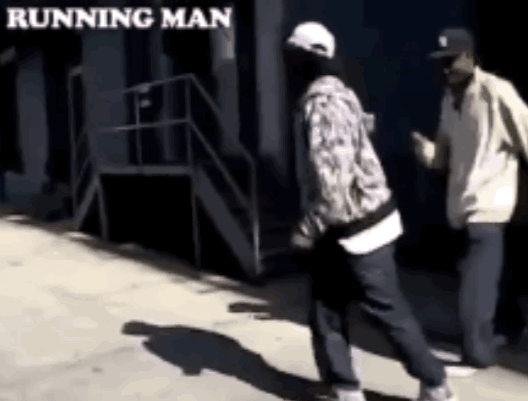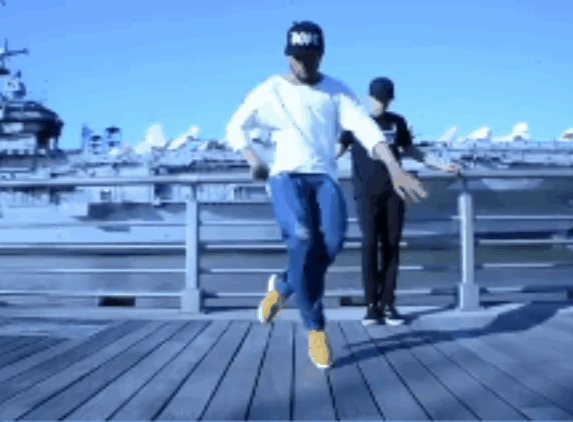Guide to Street Dance Cultures
Street dance cultures encompass a vibrant tapestry of movements, rhythms, and histories that resonate deeply within urban communities worldwide. Each dance form tells a story of its origins, evolution, and the pioneers who shaped its identity. While there are many stories and in-depth articles, this read is meant to be an overview or starting point to begin your dance journey. Not all dance is Hip-Hop. For instance, there are many styles such as funk dance and club style. Let's delve into the diverse world of street dance, exploring its rich tapestry from Breaking, Hip Hop, House, Popping, Locking, Waacking, Litefeet, to Chicago Footwork.
Breaking
History and Origins
Breaking, also born in the streets of the Bronx in the 1970s, is an acrobatic dance form that stands apart from other styles due to its dynamic floorwork. Breakers, often known as b-boys, b-girls, or simply breakers, engage in movements that can include spinning on their hands, backs, or even heads. Breaking is part of a Hip-Hop, which emerged from Black and Brown communities. Many see the dance form expressed in powerful explosive movement on the floor. However, the real dance lives within the groove of rocking. This distinctive dance style emphasizes athleticism, creativity, and the ability to express narratives through movement on the dance floor.
Breaking originated at Hip Hop block parties. This athletic dance style allows skilled dancers to engage in friendly battles and showcase their prowess.DJ Kool Herc originally dubbed these dancers as break boys (b-boys) and break girls (b-girls) because they danced to his breakbeats that he looped. Key techniques in breaking include fast footwork, freezes, power moves, downrocks, and toprocks. Both footwork and toprock require spatial awareness, the ability to innovate new moves, and the creativity to infuse each movement with personal style and flair.
Pioneers
Rock Steady Crew, New York City Breakers, and Dynamic Rockers are pioneering crews that contributed to the development and popularization of Breaking.
Rock Steady Crew
Signature Moves:
Toprock: The introductory dance performed while standing up, showcasing a dancer's style and rhythm. This is the heart of the groove.
Go Downs: Transition that help you get from your top rocks to the floor.
Footwork: Rapid, intricate movements performed close to the ground, emphasizing speed and agility.
Freezes: Static poses held mid-movement, often requiring strength and balance.
Power Moves: Dynamic and physically demanding moves that often involve spinning on the floor or performing acrobatic feats.
Hip-Hop Dance
History and Origins
Hip Hop dance emerged in the 1970s in the Bronx, New York City, closely intertwined with the emergence of Hip Hop music. It was born from the creativity and expression of African American and Latino youth seeking an outlet for self-expression and cultural identity. Their energy was channeled towards values such as originality, creativity, identity, respect, and community, steering away from substances and violence.
Pioneers
Buddha Stretch (often referenced as the Father of Hip-Hop), DJ Kool Herc, and Grandmaster Flash are notable pioneers who not only contributed to the music but also influenced the dance style with their innovative approaches to music and movement. KRS-One, Coke LA Rock, and The Sugar Hill Gang are noteworthy MC’s and Rappers who contributed to Hip-Hop’s mainstream success on the pop charts.
“Hip is to know, Hop is to move”
-KRS-ONE
Five elements of Hip-Hop:
MCing: Also called lyricism or emceeing, this is the oral element.
DJing: This includes turntablism and is the aural element.
Breaking: Also called b-boying or b-girling, this is the physical element.
Graffiti: This is the visual element.
Knowledge: This is the mental element and includes historical knowledge of the hip-hop movement.
Elements within Hip-Hop Dance :
Bounce (up and down)
Rock (front and back)
Roll
Wave
Skate
Shift
Hop
Twist
Shake
Groove
some of Hip-Hop party Dances
Old Skool
Happy Feet
Middle Skool
Steve Martin
Bart Simpson
Running Man
New Skool
Walk It out
Bankhead Bounce
Litefeet
History and Origins
Litefeet originated in Harlem, New York City, in the early 2000s as a dance style performed to Litefeet music, characterized by its upbeat tempo and energetic vibe.
Pioneers
The W.A.F.F.L.E Crew played a significant role in popularizing Litefeet, showcasing its infectious energy through viral videos and performances.
Signature Moves
Tone Wop: A foundational Litefeet move that involves quick, rhythmic footwork and syncopated steps.
Chicken Noodle Soup: A playful move that incorporates arm swings and leg kicks, often performed in sync with others.
Bad Ones: A dynamic move featuring jumps and spins, showcasing athleticism and creativity.
E Solo
Chicago Footwork
History and Origins
Chicago footwork originated in the 1990s as a dance style closely intertwined with the city's vibrant house music scene. Emerging predominantly from the South Side of Chicago, footwork evolved from earlier dance styles like juking and ghetto house dancing. Its development was deeply influenced by the fast-paced, repetitive beats and syncopated rhythms of Chicago house music, characterized by its use of drum machines and samples. While there's no decibel measurement for the dance moves themselves, the music that accompanies Chicago footwork can range in volume depending on the environment and equipment used which can vary from around 90 dB to over 110 dB in live settings.
Pioneers
RP Boo and DJ Rashad are credited with pioneering Chicago Footwork, blending elements of House dance with faster, more intricate footwork patterns.
Signature Moves
Erk & Jerk: Dancers typically move their feet in a stuttering, jerky motion, often incorporating rapid directional changes and syncopated rhythms It is also known for its dynamic energy and the ability of dancers to seamlessly transition between different footwork patterns, creating a visually captivating display of skill and creativity.
Dribbles: Similar to the quick movements of a basketball dribble, dancers perform dribbles by tapping their feet lightly and swiftly on the ground in a repetitive and syncopated manner.
Two-step: Usually seen kicking one foot out before tapping in to step out. The arms can flow as they go but mostly seen as if the feet and wrists are connected like a puppet.
Locking
History and Origins
Locking also emerged in California during the 1970s as a distinct style within the Funk dance genre. It incorporates distinctive freezes and exaggerated movements, often accompanied by humorous expressions and storytelling elements.
Pioneers
Don Campbell is credited as the pioneer who developed and popularized Locking, influencing its energetic and playful style.
Signature Moves
The Lock: A freeze where a dancer locks their limbs in a distinctive position, often with a smile or exaggerated facial expression.
The Scoobot: A sliding movement executed with one leg while maintaining a locking position with the other leg.
The Skeeter Rabbit: A quick, hopping movement that combines footwork with distinctive arm movements, showcasing agility and rhythm.
Dom Campbellock
Waacking
History and Origins
Waacking is a dance style that originated in the late 1970s in the underground club scene of Los Angeles, within the LGBTQ+ community. It emerged as a form of self-expression, heavily influenced by the culture of disco, oppression, and the vibrant nightlife of the era. Waacking is characterized by its expressive arm movements, poses, and fast footwork, often performed to disco music.
One of the significant influences on Waacking is "Punking," a dance style that developed in the early to mid-1970s. Punking incorporated fluid movements and dramatization, emphasizing individual expression and flair. Dancers would use their arms and hands to create shapes and convey emotions, which are essential elements that later informed Waacking.
Pioneers
DJ Micael Angelo was a local DJ who coined the term Punk. This was a derogatory term for gay men which the dancers of the time turned from a negative to a positive. Tyrone Proctor is well-known for his contributions to the dance style and played a significant role in popularizing Waacking in the dance community, like in Soul Train. Shabba-Doo (Adolfo Quiñones), was instrumental in defining the style and bringing it to broader audiences and mixing Locking and Waacking.
“Punking is the action, Waacking is the Reaction”
Signature Moves
Arm Movements: Waacking is characterized by rapid and expressive arm movements. Dancers often use their arms to create sharp lines, shapes, and poses, showcasing fluidity and precision.
Posing: The dance frequently involves striking dramatic poses, often inspired by fashion and performance art. These poses help convey emotion and personality, allowing dancers to express themselves vividly.
Musicality: Waacking dancers emphasize musicality, interpreting the beats and rhythm of the music through their movements. This involves syncing arm movements and footwork with the music's tempo and dynamics from lyrics, instruments, and/or polyrhythms.
Expressiveness: Dancers often incorporate facial expressions and body language to enhance the storytelling aspect of their performance. This emotional connection helps convey the character of the dance and engage the audience.
House
History and Origins
Originating in the 1980s in Chicago and New York City, House dance is deeply rooted in the club culture and music of the time. Many sounds from House music emerged from Disco music and the LGBTQ+ community. It emphasizes footwork, fluid movements, and improvisation.
Pioneers
Frankie Knuckles, Larry Levan, and Tony Humphries were influential DJs who shaped the House music scene, thereby influencing the dance form.
Foundations:
Jackin': A fundamental groove that is often seen with the torso however it can exist in all parts of the body
Lofting: Emerged from venues and parties with low ceilings (the Loft Club), dancers would work at mid to low level. Fluid, continuous movements that travel across the dance floor, incorporating spins and turns, and floor work. often. Some say this is its own style/ culture however it has become a subculture of dance.
Footwork: Complex, fast-paced foot movements that sync with the beat of House music, showcasing technical skill and musicality.
VersaStyle
Signature Moves:
Jack in the Box
Marjory/ Lotus
Dodger
Loose Leg
Popping
History and Origins
Popping emerged in California during the 1970s as a distinct style within the Funk dance genre. It involves the sudden contraction and relaxation of muscles to create a popping effect, often accompanied by robotic movements.
Pioneers
Boogaloo Sam is credited as a pioneer who developed and popularized Popping, influencing its style and technique. For more information, head over to The Comprehensive Guide to Popping
Signature Moves
Pop: The "pop" in Popping dance refers to a sudden, sharp contraction and release of the muscles to create a quick, snapping movement. This technique is usually done in sync with the rhythm of the music, giving the illusion that the dancer’s body is jolting or hitting. The "pop" can be performed with various parts of the body, including the arms, legs, chest, and neck. This foundational move is essential for creating the characteristic staccato and robotic style of Popping dance.
Fresno: A precise, mechanical style that mimics robotic movements, emphasizing isolation and control usually side by side that emphasizes sway.
The Dime Stop: A sudden freeze executed at a precise moment in the music, showcasing control and musicality.
Hoan & J Smooth
Street dance cultures continue to evolve and influence global dance trends, bridging cultural divides and celebrating diversity. From the block parties of the Bronx to the underground clubs of Chicago, these dance forms embody resilience, creativity, and the spirit of community. Whether you're drawn to the soulful grooves of House, the technical precision of Popping and Locking, the athleticism of Breaking, or the infectious energy of Litefeet and Chicago Footwork, exploring these dance cultures offers a glimpse into the rich tapestry of urban expression and creativity.
Ready to take your Popping skills to the next level? Subscribe to our Popping Dance Mastery program and unlock exclusive tutorials, tips, and workshops! Join today and dance your way to mastery. Visit below for more details.














